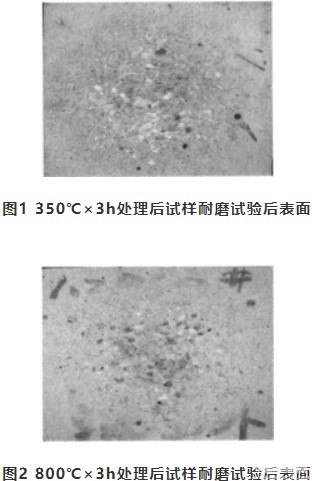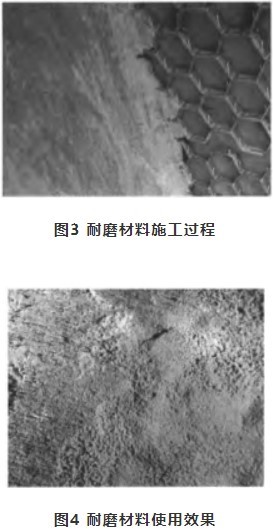preface
The waste heat power generation of cement kiln is to recover and exchange a large amount of low-grade waste heat from kiln head and kiln tail through the waste heat recovery device - waste heat boiler in the production process of the new dry process cement production line, generate superheated steam to drive the steam turbine to realize the conversion of thermal energy - mechanical energy, and then drive the generator to generate electricity and supply power load in the cement production process. This system not only greatly improves the energy utilization level in the cement production process, but also plays a huge role in promoting environmental protection and improving the economic benefits of enterprises. The inner side of the pipe of the waste heat power generation system of the cement kiln is scoured by the high-speed airflow mixed with small solid particles and dust, and the structural lining is easy to wear in a relatively short time, which leads to the shutdown and maintenance of the waste heat power generation system, resulting in a series of problems such as reduced service life and low heat utilization rate. The temperature of the waste heat gas used by the waste heat power generation system of the cement kiln generally does not exceed 700 ℃. Under this temperature condition, the high-temperature performance of the wear-resistant lining made of silicon carbide, corundum and other raw materials is difficult to give full play, the cost of raw materials is high, and the thermal conductivity of the silicon carbide material is large. It is usually necessary to add a layer of thermal insulation lining on the inner wall of the pipeline to improve the heat utilization rate. Due to the inconvenience of formwork erection and pouring in the new dry method, most of them are constructed by tamping or smearing. In view of this situation, this work has developed a kind of wear-resistant material suitable for the waste heat power generation system of cement kiln, which has the characteristics of convenient construction, high structural strength, good erosion resistance, excellent volume stability, etc., and has significantly extended the service life of the waste heat power generation system pipeline.
1、 Test
1.1 Raw materials
According to the working conditions of the waste heat power generation system of the cement kiln, the main raw materials used in the test are bauxite, calcined aluminum oxide powder, clay, silica powder, calcium aluminate cement, etc. The chemical composition of the main raw materials of bauxite is shown in Table 1 。 In order to facilitate the transportation and storage of materials, the product uses aluminum dihydrogen phosphate dry powder as the binder and adds masking agent.
Table 1 Chemical Composition of Main Raw Materials (%)

1.2 Sample preparation
Mix 8~5mm, 5~3mm, 3~1mm and 1~0mm high alumina bauxite according to the proportion, then add 2% phosphoric acid with the concentration of 42.5% to mix evenly, and then add no more than 200 mesh high alumina fine powder, calcined aluminum oxide powder, clay, silica micro powder, aluminum dihydrogen phosphate and masking agent to mix evenly, seal the trap for 24h, then add calcium aluminate cement and water according to the proportion, and tamp them in the mold to form, Natural curing for 24h, drying at 110 ℃ After 24h, the strength, wear resistance and linear change of the samples were measured after heat treatment at 350 ℃ and 800 ℃ for 3h respectively.
1.3 Material design mechanism
The wear resistant materials used in the waste heat power generation system of the cement kiln are mainly damaged due to the weak binding ability of the matrix and aggregate under the use conditions The strength of the material itself is higher than that of the matrix. After the matrix is washed by particles mixed with high-speed air flow, the aggregate particles are exposed, and then lose support and fall off. Therefore, in order to improve the abrasion resistance of the pipeline lining, on the basis of strengthening the bonding strength of the matrix part, the bonding strength between the matrix and the aggregate should be strengthened first. During the mixing process, phosphoric acid should be used to wet the surface of the aggregate particles before adding the powder, so as to form a structure where the particles are wrapped by the powder, which is conducive to enhancing the bonding capacity of the matrix and the aggregate.
In terms of particle grading, continuous particle distribution is adopted, and the design is based on the principle of the most compact stacking to form a dense skeleton structure. The masking agent can inhibit the reaction of phosphoric acid and iron in the material to produce gas, reduce the foaming and swelling effect during the molding process, and even if the reaction occurs, the trapping process is conducive to the release of gas before molding. Calcium aluminate cement plays a role in promoting the hardening of materials, and silica micro powder plays a role in dispersion, reducing the amount of water added to materials, which is conducive to improving the compactness.
2、 Effect of different treatment temperatures on properties
Refer to Table 2 , from Table 2 It can be seen from the data in that the strength of the sample treated at 110 ℃ and 350 ℃ is close, while the strength of the sample treated at 800 ℃ has increased.
Table 2 Effect of Different Treatment Temperatures on Sample Properties

This is mainly because different aluminum phosphate phases will appear between phosphoric acid and phosphate and alumina with the increase of temperature. At room temperature, part of H ₂ PO ₄ and Al ₂ O ∨ produce aluminum phosphate phase of Al (H ₂ PO ₄) ∨. This reaction process has started in the process of trapping materials Compared with aluminum oxide, calcined aluminum oxide powder can reduce the reaction rate between the two, avoid premature caking of materials, which is conducive to extending the storage life of products; After the aluminum dihydrogen phosphate dry powder is added and dissolved, the Al (H ₂ PO ₄) ∨ in the sample further increases. Aluminum dihydrogen phosphate is a kind of binder with both gas and heat hardness. Under the effect of calcium aluminate cement, a hardening agent, it plays a strengthening role through polymerization and adhesion, and mainly adhesion at room temperature. With the increase of temperature, partially added Al (H ₂ PO ₄) ∨ and generated 2Al (H ₂ PO ₄) will further produce aluminum phosphate phase of Al ₂ (H ₂ P ₂ O ₇) ∨ with Al ₂ O ₂; When the temperature is above 500 ℃, the polymerization of Al ₂ (H ₂ P ₂ O ₇) ≮ mainly occurs to generate aluminum metaphosphate polymer [Al (PO ∨) ∨] n. During the whole heating process, due to the formation of polymer and the evaporation of water, the viscosity of the bond increases, accelerating the curing and strength improvement of the sample.
It can be seen from the permanent linear change index of heating that with the increase of heat treatment temperature, the sample presents a shrinkage state, which is mainly caused by the densification process. The construction method of ramming materials determines that the powder content in the mix ratio is larger than that of ordinary castables, and the powder is easier than the aggregate Shrinkage occurs, but it is difficult to produce sufficient sintering when the cement kiln waste heat power generation system is not higher than 700 ℃.

from Figure 1 and Figure 2 Wear interface after wear test at medium temperature It can be seen that the matrix and aggregate are worn at the same time, indicating that the combination of the two is relatively close, which provides a basis for the material to have good wear resistance. Moreover, the material has the phenomenon after heat treatment at 350 ℃ and 800 ℃, but there are differences in wear resistance indicators. According to the long-term working temperature of the waste heat power generation system of the cement kiln, this temperature condition is just in the temperature range where the cement completely loses the bonding water. Under the condition of fully sintering, the use of cement as a binder is prone to fluctuations in strength reduction, On the other hand, it is confirmed that the phosphate binder is more suitable to improve the strength and wear resistance of materials at different temperatures.
3、 Application examples
The material is applied to the high-pressure pipeline of the 5000t/d cement kiln waste heat power generation system of a company. The inner wall of the pipeline is welded with 20 mm high tortoiseshell mesh, which is constructed by manual coating. The material construction thickness is 30 mm, and the construction effect is shown in Figure 3 The hardening time is about 4h. After one year of use, take the opportunity of stopping the kiln for maintenance to check the pipe lining. See Figure 4 , The wear thickness of most materials is less than 2mm, and there is no large-scale crack and peeling phenomenon. The lining is basically in good condition, which can still be used for a long time, and has achieved good results.

4、 Conclusion
(1) According to the working conditions of the waste heat power generation system of the cement kiln, the material design mainly starts from strengthening the bonding strength of aggregate and matrix, so that both can achieve synchronous wear under different temperature conditions.
(2) The wear-resistant materials prepared with high alumina as the main raw material will form different bonding phases with the increase of temperature, which provides a basis for the improvement of material strength and wear resistance.
(3) The practical application of wear-resistant materials shows that the construction performance of materials Excellent, setting and hardening time is appropriate, and the material has strong erosion resistance and anti stripping performance. The material has broad prospects for promotion and application.
Authors: Wang Liwang, Zhu Qiliang, Li Xinming
Source: Zhejiang Jincheng New Material Co., Ltd
WeChat official account: spare parts website (follow for more information)
(This article is from the network. If copyright issues are involved, please call or write to the author!)







